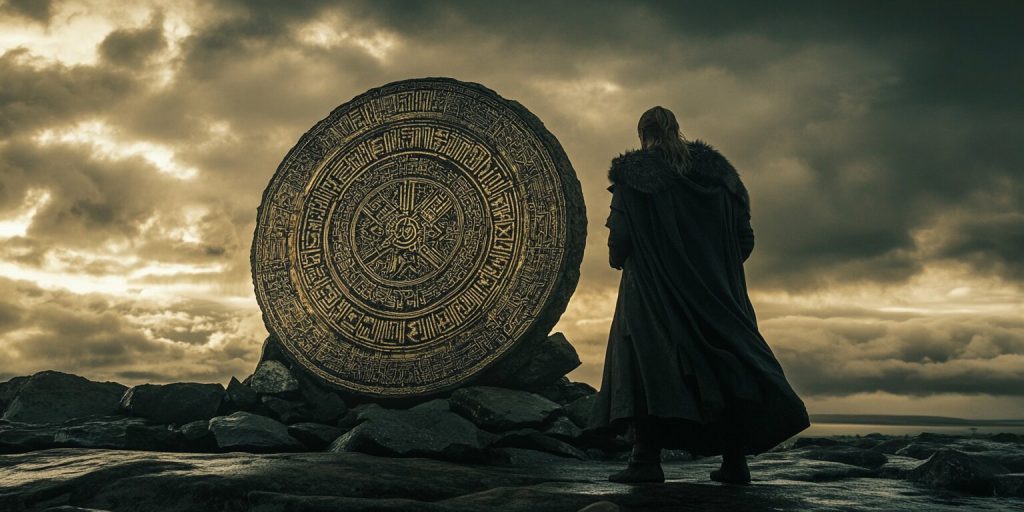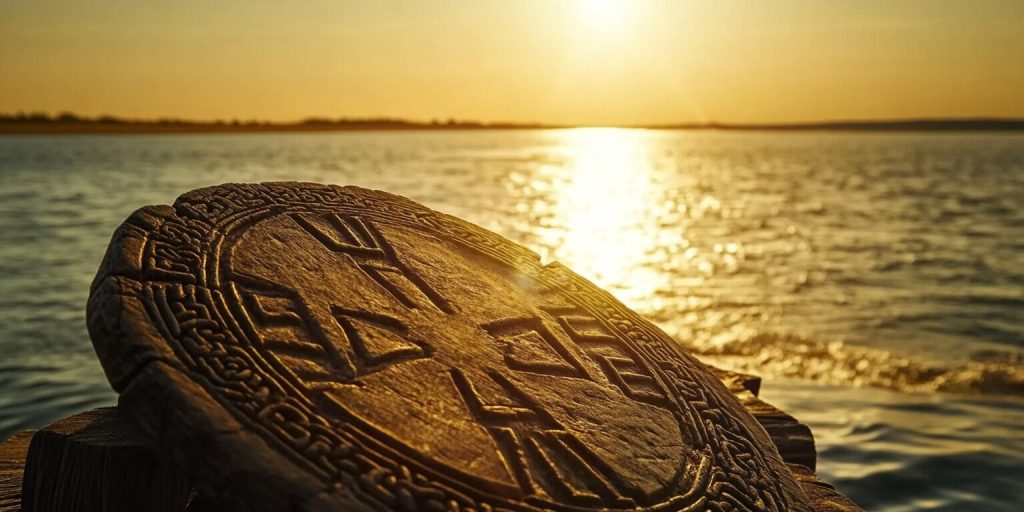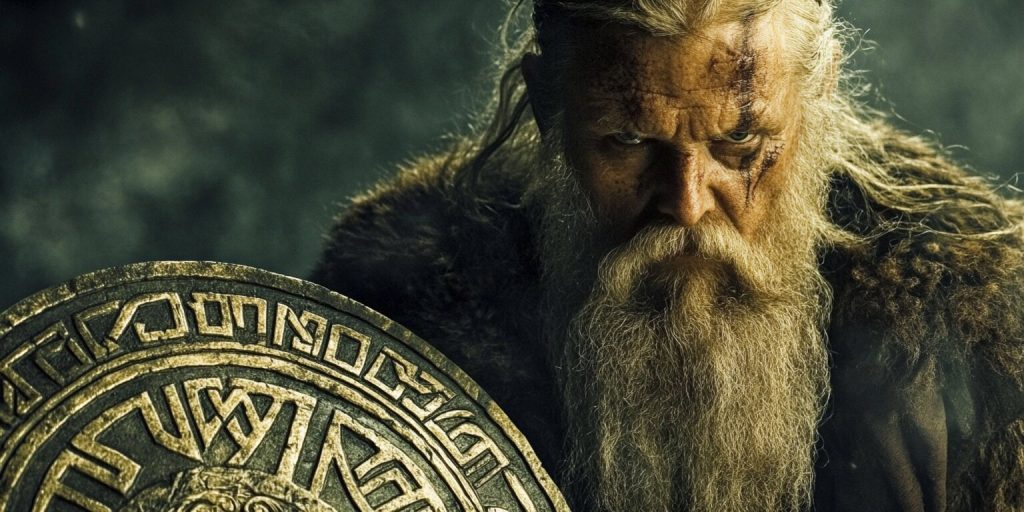Daily Life in the Viking Age, Norse Runes, Norse Symbols, Vikings
The Enigma of Norse Number Systems: Did Vikings Use Zero?
The study of Norse numbers is fascinating. It shows how culture and math mixed in Viking society. Historians and math experts wonder: did Vikings know about zero?
This question is not just for scholars. It shows how numbers were important in Viking life and culture. We learn more about their legacy by looking at Viking numbers and if they used zero.
Works like “The History of Mathematics: A Brief Course” by Roger L. Cooke help us understand. So does “Norse Mythology for All.” These sources guide us into this mysterious topic.
Understanding Viking Numbers
Numbers were significant in Viking society. They showed cultural values and beliefs. Viking numbers were used in daily life, like in trade and navigation.
The Significance of Numbers in Viking Culture
In Viking culture, numbers were more than just numbers. They were symbols in rituals and stories, representing more than just numbers but also cultural significance. Numbers three and nine were special, linked to myths and big events.
The number three was often seen in Norse stories, where symbols from the futhark represent various concepts. It meant harmony and completeness, concepts usually expressed in their numerical systems and runic calendars.
How Viking Numbers Differed from Modern Systems
The Viking numbers system was different from ours today. They used many symbols, not just numbers, including the Younger Futhark. This made counting harder than it is now, especially since numbers are usually spelled differently today.
Their system was based on adding numbers. They had special ways of counting big numbers, often using symbols representing the number they represented. Knowing this helps us understand their history and how numbers have changed.
Norse Numbers: A Closer Look
The story of Norse numbers, as explored by Jackson Crawford, is fascinating. It’s tied to the rich history of the Norse people. We must examine language, archaeology, and history to understand Norse numbers. This helps us see their importance in daily life and trade.

History of Norse Number Systems
The history of Norse numbers shows a unique path. Early Norse societies counted in simple ways, like counting animals. Their counting systems grew as they traded with others.
Old Norse numerals became more complex over time, reflecting the growth of Norse society. Merchants used these numbers in trade, making them practical and useful.
Old Norse Numerals and Their Usage
Old Norse numbers were key in Norse life, particularly in trade and daily activities during the Viking Age. They were used in business and to record important events. These numbers helped in trade, taxes, and keeping track of goods, showcasing how they were essential in the Viking Age.
- Marketplaces used Old Norse numerals for fair deals.
- Important events were documented with these numbers, showing their cultural value.
- Using Norse numbers in daily life showed a deep understanding of commerce and society.
The history of Norse numbers shows more than just numbers. It shows the time’s cultural changes and sets the stage for future math developments in the area.
Zero in Ancient Nordic Numerical Systems
The study of zero in ancient Nordic systems reveals interesting facts about Viking math skills. Zero’s role in Viking society is still debated. This section examines whether the Norse knew about zero and how it affected their counting.
Did Vikings Recognize the Concept of Zero?
There’s little proof that the Vikings knew about zero. They counted things they could touch, not empty spaces. Without zero, how did Vikings keep track of things in trade and travel? Looking at other cultures’ math systems helps us understand better.
The Role of Zero in Other Ancient Cultures
Zero was key in ancient cultures like the Babylonians and Mayans. The Babylonians used zero to create advanced math, much like the Norse used runic calendars to track time. The Mayans used zero in their calendars and astronomy. This shows how zero helped different cultures, unlike in Viking societies.
Viking Runes and Their Numeric Representation
Viking runes were more than just symbols; they were a form of notation with deep meaning. They were used for writing and counting. These symbols were key for the Vikings, blending words and numbers. This shows how runes connected language and math.

How Viking Runes Were Used for Numbering
Viking runes numbers were used in many ways, showing their flexibility. They were carved on stones, wood, and metal for trade, laws, and to remember important events.
Numbers were shown with special runes. This made it easy to talk about amounts and values. For example, they might have used runes for:
- Keeping track of goods
- Marking dates or deals
- Recording values in trades
This shows how runes were a big part of Viking life. They mixed well with their writing.
Comparisons with Other Runic Systems
Looking at Viking runes’ numbers, we see how they compare to others. For example, the Anglo-Saxon futhorc also had numbers. However, they used different symbols differently, particularly during the Viking Age.
Books like “Rune Mysteries: A Mythologie” by Doub B. Johnston help us understand these differences. They show how different cultures used runes for numbers. We see differences in:
- How many letters and numbers they had
- How they used numbers
- The symbols they chose
These comparisons show how runes evolved. They highlight the Vikings’ unique role in ancient number systems.
Summary
Exploring Nordic numbers gives us a peek into Viking lives and math. It shows how numbers were part of their everyday trade and rituals. Their unique number systems tell us about their view of the world.
We looked at how Vikings didn’t use zero and their old numerals. Their history shows how numbers were used for counting and culture. Studying Norse numbers helps us understand the history and its impact on today’s numbers.
Learning about Norse numbers reveals how numbers shape society and culture, particularly through runic inscriptions. This journey makes us think about how ancient people, like the Vikings, saw math and how they wrote numbers. It also shows how their math still affects us today.

